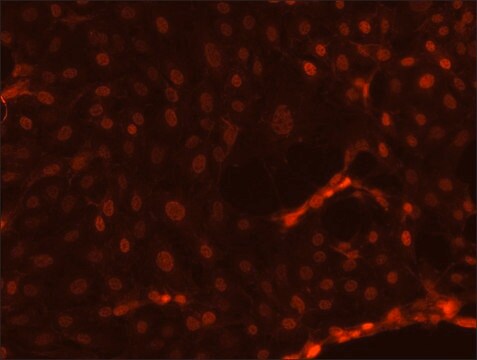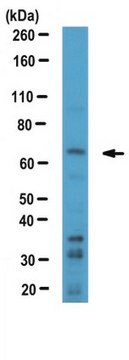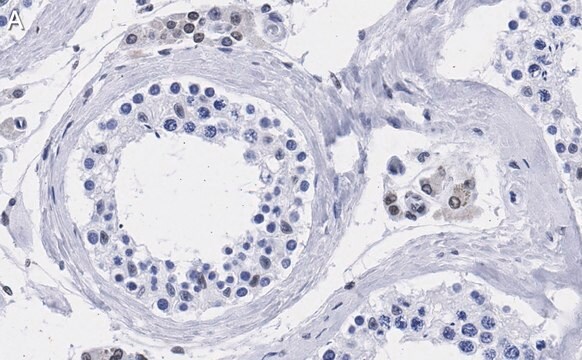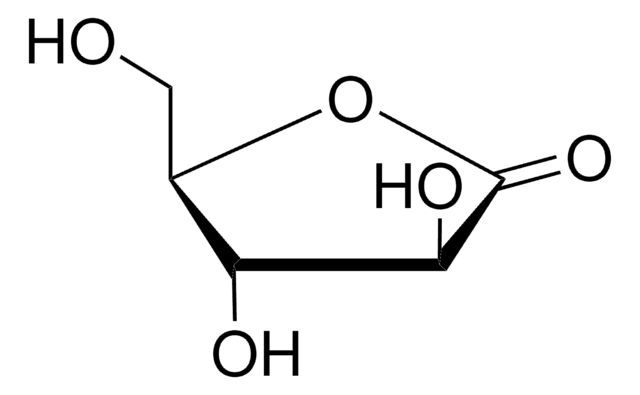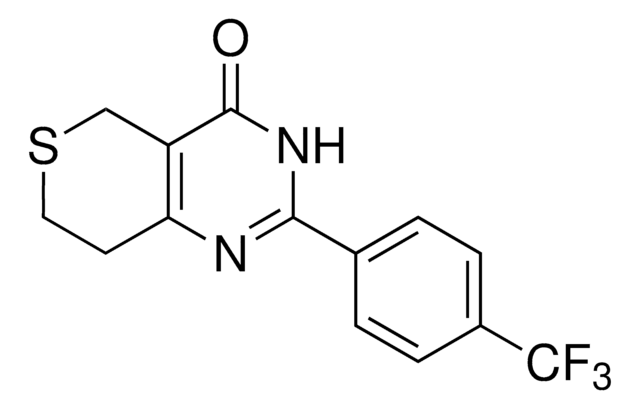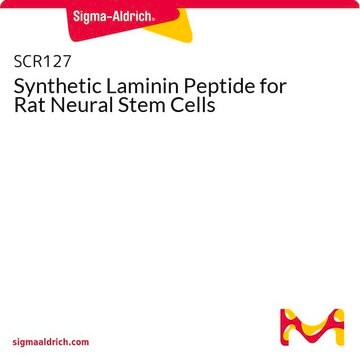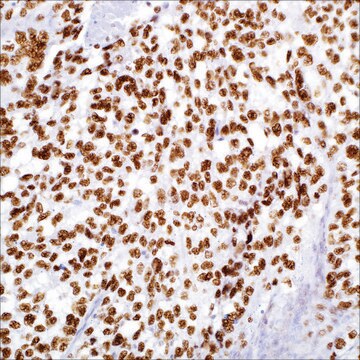推薦產品
生物源
rabbit
品質等級
抗體表格
affinity isolated antibody
抗體產品種類
primary antibodies
無性繁殖
polyclonal
純化經由
affinity chromatography
物種活性
mouse, human
技術
immunocytochemistry: suitable
western blot: suitable
NCBI登錄號
UniProt登錄號
運輸包裝
ambient
目標翻譯後修改
unmodified
基因資訊
human ... TFE3(7030)
一般說明
Transcription factor E3 (UniProt P19532; also known as bHLHe33, Class E basic helix-loop-helix protein 33, TFE3) is encoded by the TFE3 (also known as BHLHE33) gene (Gene ID 7030) in human. TFE3 contains adjacent helix-loop-helix (HLH) and leucine zipper (LZ) domains flanked by an upstream basic region. It specifically recognizes and binds E-box sequences (5′-CANNTG-3′). TFE3 is ubiquitously expressed and can directly associate with DNA as either homodimers or heterodimers formed with two related proteins, TFEB or TFEC. In association with TFEB, TFE3 activates the expression of CD40L in T-cells, thereby playing a role in T-cell-dependent antibody responses in activated CD4+ T-cells and in thymus-dependent humoral immunity. TFE3 binds to and activates the microE3 motif of the immunoglobulin heavy-chain enhancer to induce B-cell-specific gene transcription and DNA recombination. TFEB is expressed at low levels in the embryo, but is expressed at high levels in the trophoblast cells of the placenta, where it plays a critical role in regulating normal vascularization. It has been shown that the exit from pluripotency is gated by intracellular redistribution of TFE3. Chromosomal aberrations involving TFE3 have been reported in patients with papillary renal cell carcinoma. Ref.: Betschinger, J., et al. (2013). Cell 153, 335-347.
特異性
This polyclonal antibody targets the human TFE3 leucine zipper region sequence.
免疫原
KLH-conjugated linear peptide corresponding to a leucine zipper region sequence of human TFE3.
應用
Anti-TFE3, Cat. No. ABE1400, is a highly specific rabbit polyclonal antibody that targets transcription factor E3 (TFE3) and has been tested in Immunocytochemistry and Western Blotting.
Immunocytochemistry Analysis: A 1:500 dilution from a representative lot detected TFE3 in 4% paraformaldehyde-fixed, 0.5% Triton X-100-permeablized MEF-1 mouse embryonic fibrolasts.
Research Category
Epigenetics & Nuclear Function
Epigenetics & Nuclear Function
品質
Evaluated by Western Blotting in NIH/3T3 nuclear extract.
Western Blotting Analysis: 0.1 µg/mL of this antibody detected TFE3 in 10 µg of NIH/3T3 nuclear extract.
Western Blotting Analysis: 0.1 µg/mL of this antibody detected TFE3 in 10 µg of NIH/3T3 nuclear extract.
標靶描述
~75 kDa observed. Target band size appears larger than the calculated molecular weight of 61.52 kDa due to posttranslational modification. Uncharacterized bands may be observed in some lysate(s).
外觀
Affinity purified.
Purified rabbit polyclonal antibody in buffer containing 0.1 M Tris-Glycine (pH 7.4), 150 mM NaCl with 0.05% sodium azide.
儲存和穩定性
Stable for 1 year at 2-8°C from date of receipt.
其他說明
Concentration: Please refer to lot specific datasheet.
免責聲明
Unless otherwise stated in our catalog or other company documentation accompanying the product(s), our products are intended for research use only and are not to be used for any other purpose, which includes but is not limited to, unauthorized commercial uses, in vitro diagnostic uses, ex vivo or in vivo therapeutic uses or any type of consumption or application to humans or animals.
未找到適合的產品?
試用我們的產品選擇工具.
儲存類別代碼
12 - Non Combustible Liquids
水污染物質分類(WGK)
WGK 1
分析證明 (COA)
輸入產品批次/批號來搜索 分析證明 (COA)。在產品’s標籤上找到批次和批號,寫有 ‘Lot’或‘Batch’.。
Kaushal Asrani et al.
The Journal of clinical investigation, 129(12), 5584-5599 (2019-09-19)
The microphthalmia family of transcription factors (MiT/TFEs) controls lysosomal biogenesis and is negatively regulated by the nutrient sensor mTORC1. However, the mechanisms by which cells with constitutive mTORC1 signaling maintain lysosomal catabolism remain to be elucidated. Using the murine epidermis
Kaiyuan Wu et al.
Autophagy, 17(11), 3707-3724 (2021-02-26)
The mechanisms orchestrating recycling of lysosomes through autophagic lysosome reformation (ALR) is incompletely understood. Previous data show that genetic depletion of BLOC1S1/GCN5L1/BORCS1 increases autolysosome (AL) accumulation. We postulated that this phenotype may manifest due to perturbed ALR. We explored this
我們的科學家團隊在所有研究領域都有豐富的經驗,包括生命科學、材料科學、化學合成、色譜、分析等.
聯絡技術服務